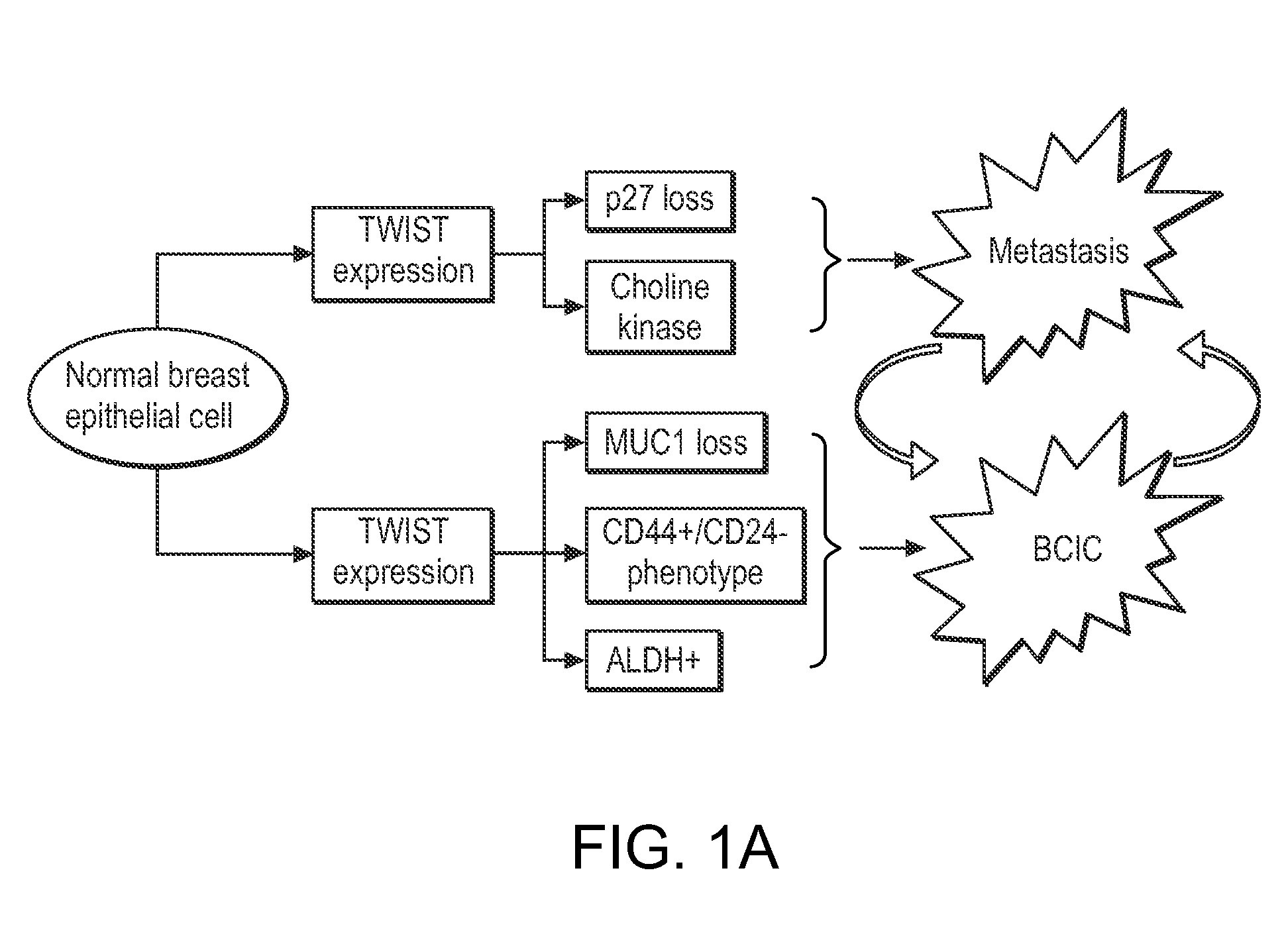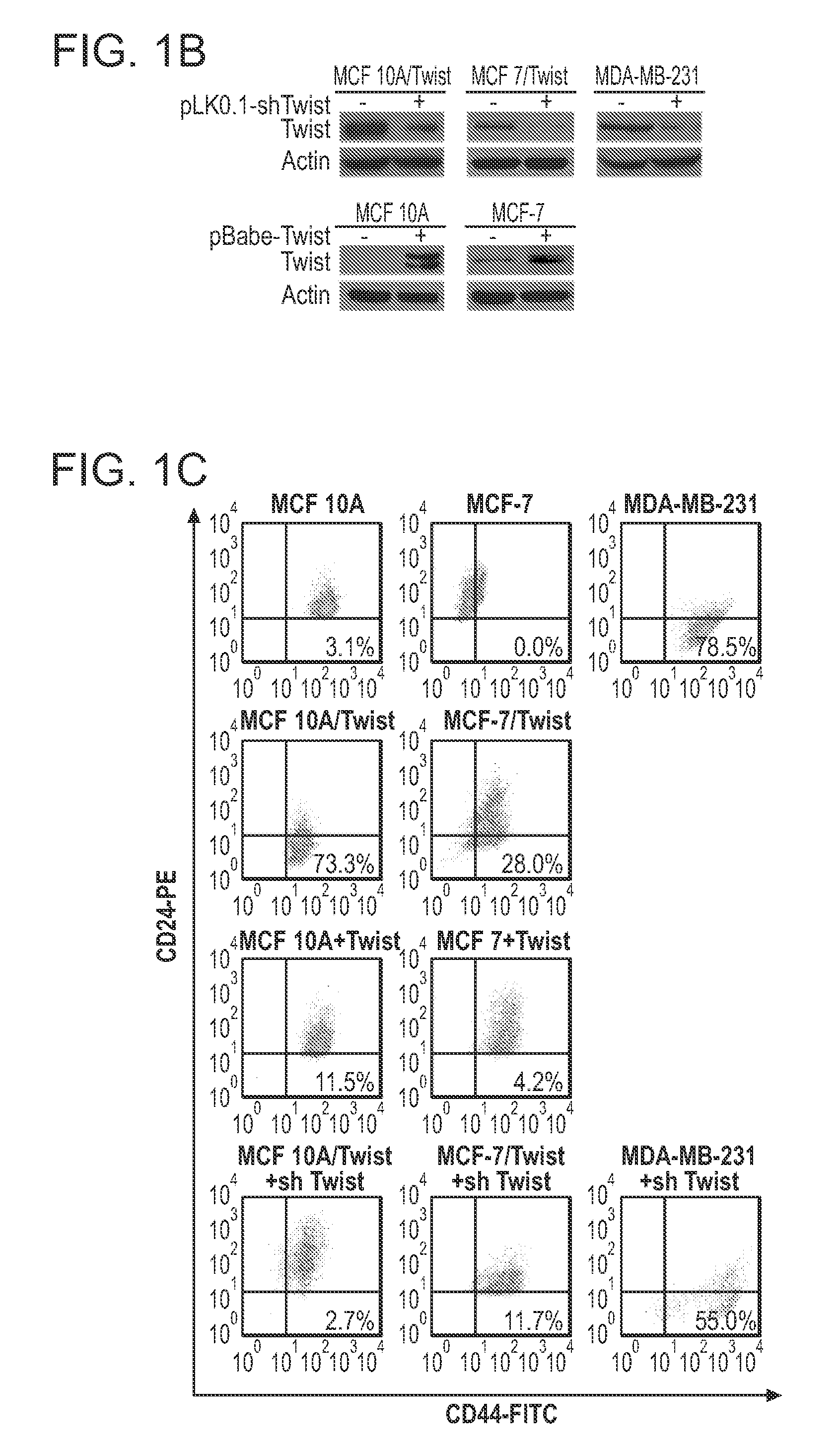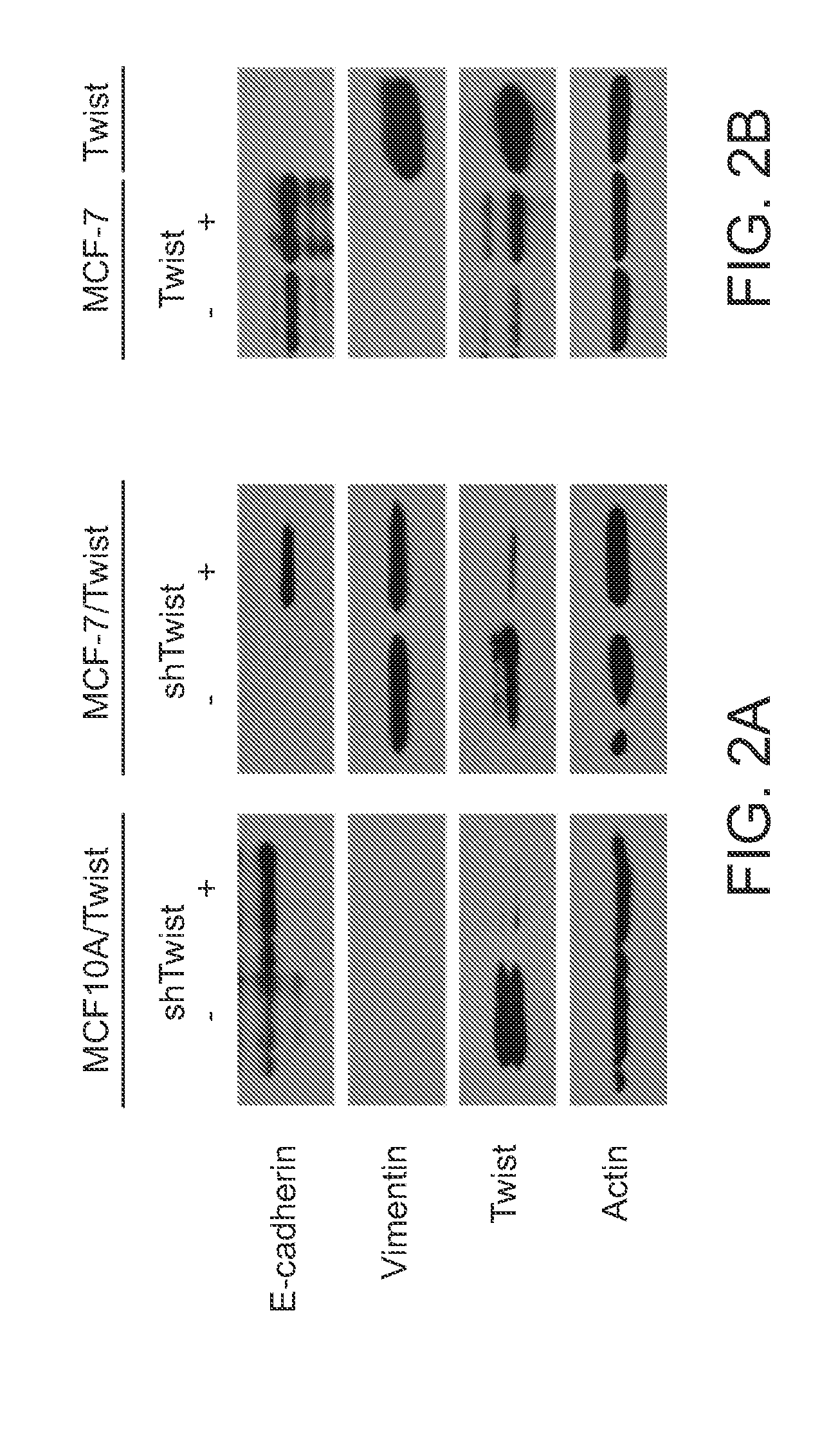Compositions and Methods for Characterizing Breast Cancer
a breast cancer and composition technology, applied in the field of compositions and methods for characterizing breast cancer, can solve the problems of reducing the number of breast cancer patients, requiring the saving of the healthy stem cell population, and more complex immunotherapies and gene therapies, so as to increase the expression of estrogen receptors, reduce or eliminate twist and cd44 levels, and increase cd24 levels
- Summary
- Abstract
- Description
- Claims
- Application Information
AI Technical Summary
Benefits of technology
Problems solved by technology
Method used
Image
Examples
example 1
A CD44+ / CD24− / low Subpopulation is Evident in Twist-Overexpressing Breast Cells
[0261]Recent studies have demonstrated that the cell surface expression pattern of CD44 and CD24 constitutes a major identifying marker of breast cancer stem cells. To determine the role of Twist in inducing the breast cancer stem cell subpopulation, Twist was overexpressed and knocked down in a panel of normal immortalized mammary cells and breast cancer cell lines. MCF-10A / Twist, MCF-7 / Twist, and MDA-MB-231 cell lines were used as models for stable Twist overexpression as well as for transiently knocking down Twist expression using short hairpin RNA (shRNA) lentiviral constructs. Parental MCF-10A and MCF-7 cell lines were used as Twist-nonexpressing models into which Twist was transiently expressed using retroviral constructs. Immunoblot analysis was used to determine the levels of Twist expression in the transgenic cell lines as well as in Twist knockdown cell lines. A significant decrease in Twist exp...
example 2
Knockdown of Twist Reverses the Stem Cell Phenotype
[0264]Because Twist overexpression altered CD44 and CD24 expression levels, it was determined whether decreasing Twist expression could reverse the cancer stem cell phenotype back to parental status. Toward this goal, Twist expression was knocked down in MCF-10A / Twist and MCF-7 / Twist cell lines, using lentiviral-mediated shRNA knockdowns (FIG. 1B). These cell lines showed lowered Twist expression when compared with parental MCF-10A / Twist and MCF-7 / Twist cells. Subsequent analysis of the CD44+ / CD24− / low subpopulation by flow cytometry revealed a reduction in the CD44+ / CD24− phenotype in both Twist knockdown cell lines-MCF-10A / Twist (reduced from 73.3% to 2.7%) and MCF-7 / Twist (reduced from 28.0% to 11.7%; FIG. 1C, fourth row). Knockdown of Twist expression in MDA-MB-231 cells decreased the CD44+ / CD24− / low subpopulation from 78.5% in the parental cells to 55% in the knockdown cells (fourth row). Collectively, these data demonstrate th...
example 3
MCF-7 / Twist Cells Show Increased Efflux of Hoechst 33342 and Rhodamine 123 Dyes
[0266]A characteristic of stem cells is increased drug resistance brought about by elevated expression of ATP-binding cassette (ABC) transporters on the cell surface. The functionality of these transporters can be characterized by studying the efflux of vital dyes such as Hoechst 33342 and Rhodamine 123 from treated cells. Because Twist expression also induces chemoresistance, the ability of MCF-7 / Twist cells to extrude Hoechst 33342 dye microscopically was evaluated. As shown in FIGS. 3A and 3B, MCF-7 / Twist cells retained significantly less dye compared with parental MCF-7 cells (relative fluorescence intensity per cell of 57 vs 65). To determine factors responsible for increased efflux, quantitative reverse transcription-PCR (qRT-PCR) was carried out for the expression of various stem cell factors such as ABC transporters ABCG2 and ABCC1 (MRP1). The results obtained revealed a significant increase in AB...
PUM
| Property | Measurement | Unit |
|---|---|---|
| Inhibition | aaaaa | aaaaa |
Abstract
Description
Claims
Application Information
 Login to View More
Login to View More - R&D
- Intellectual Property
- Life Sciences
- Materials
- Tech Scout
- Unparalleled Data Quality
- Higher Quality Content
- 60% Fewer Hallucinations
Browse by: Latest US Patents, China's latest patents, Technical Efficacy Thesaurus, Application Domain, Technology Topic, Popular Technical Reports.
© 2025 PatSnap. All rights reserved.Legal|Privacy policy|Modern Slavery Act Transparency Statement|Sitemap|About US| Contact US: help@patsnap.com



